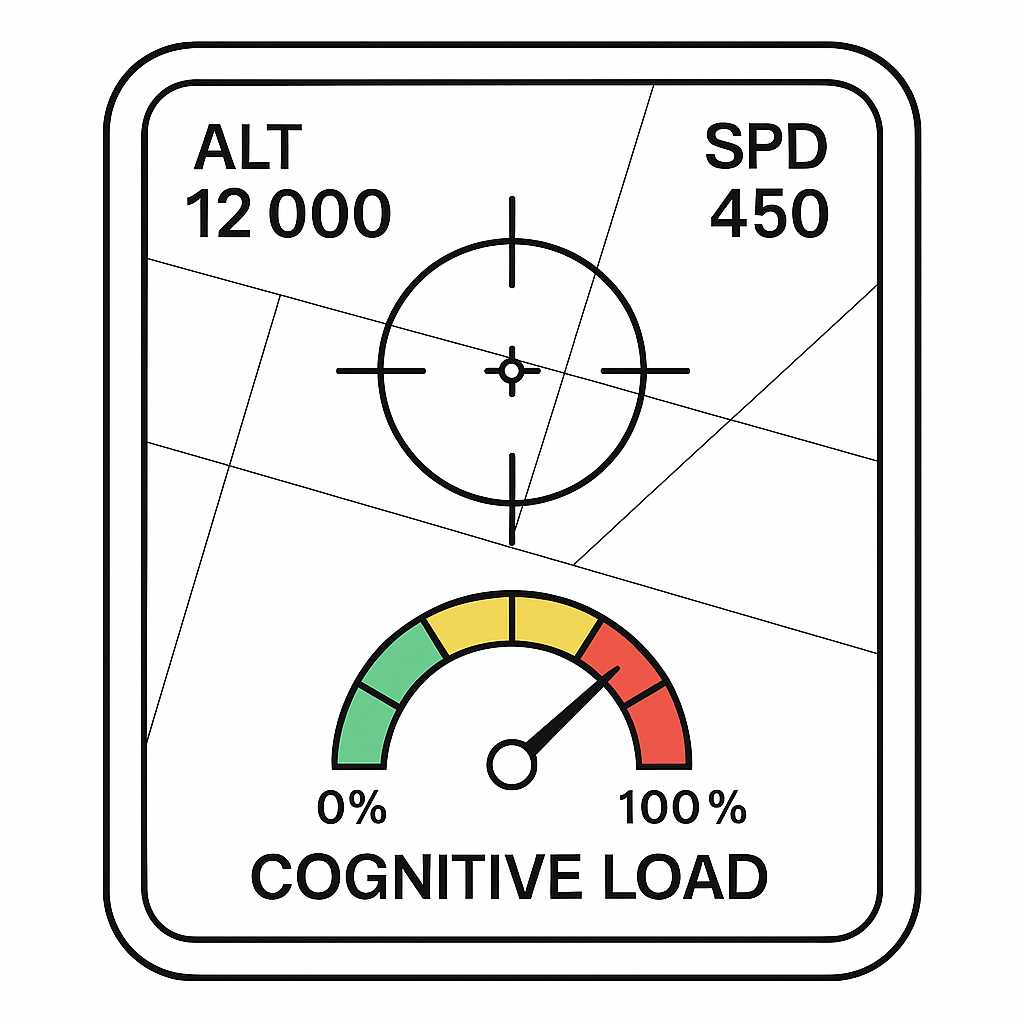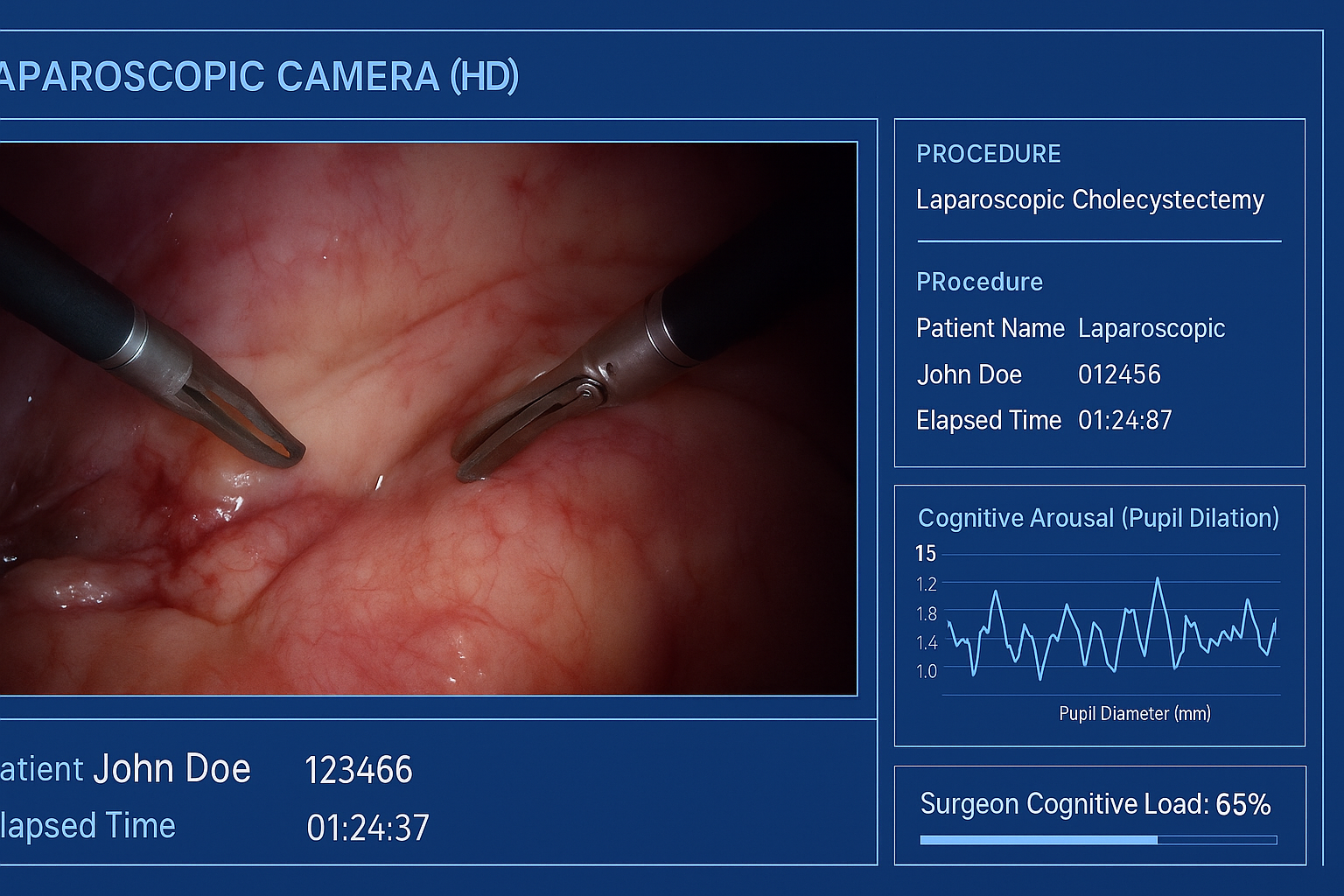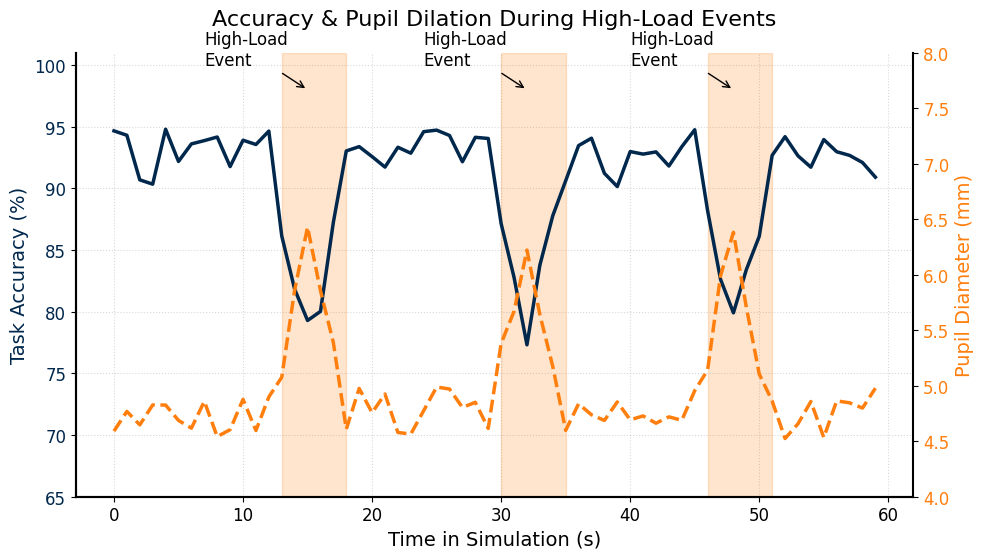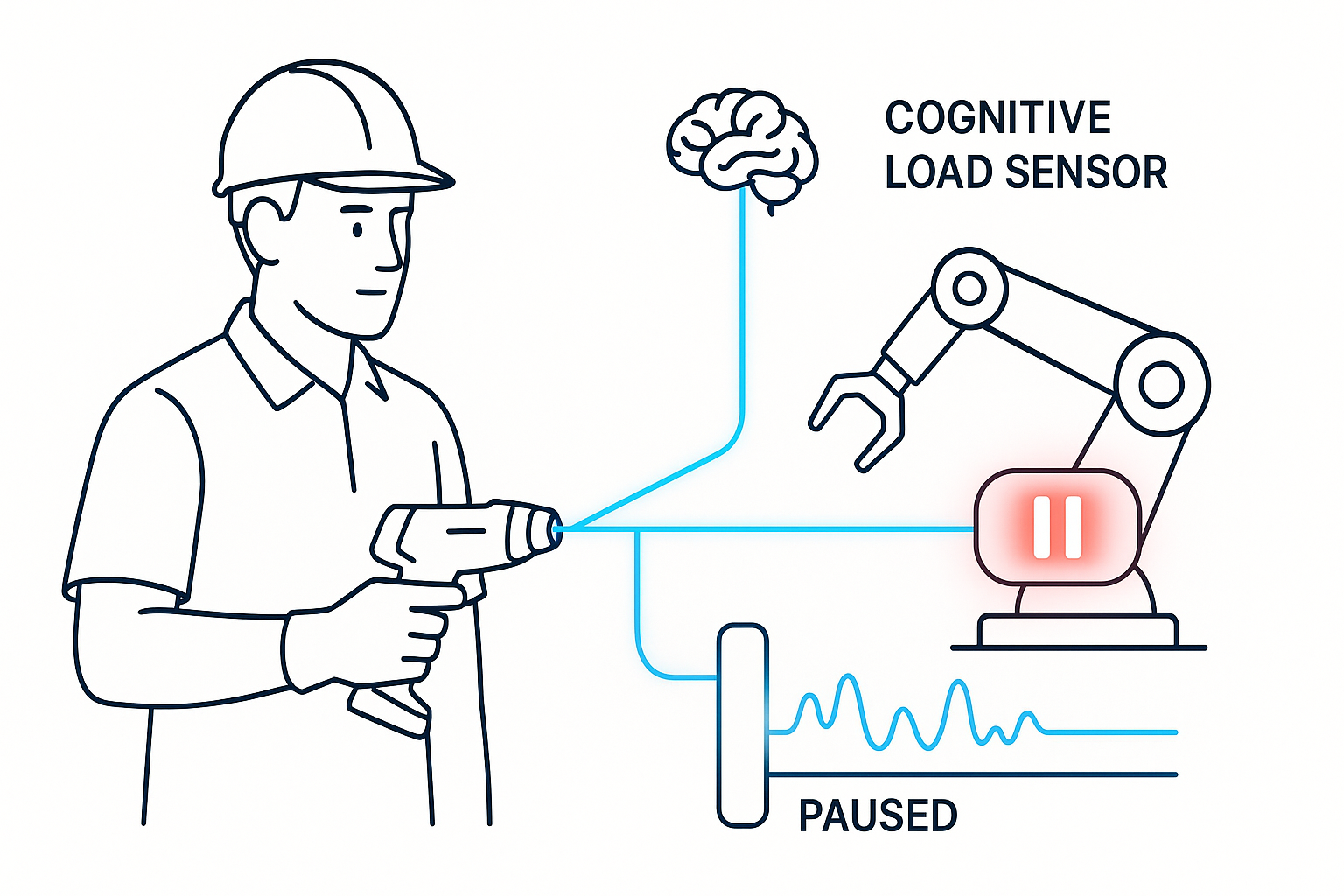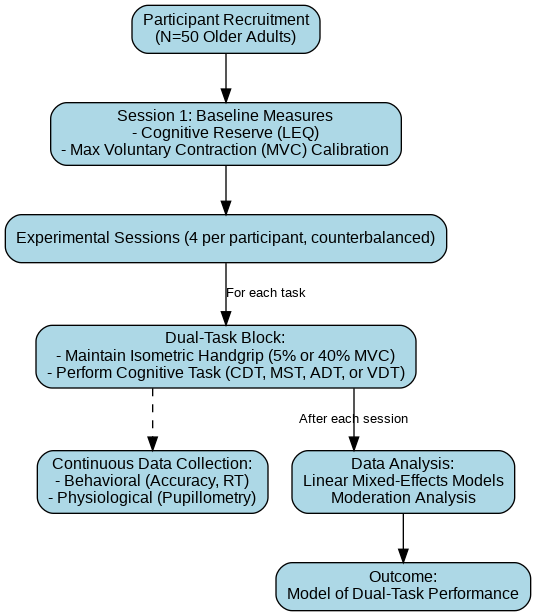Case Study: A Psychophysiological Approach to Modeling Dual-Task Interference
🌟 Overview: The High Cost of Cognitive Overload
“Imagine an airline pilot mid-flight, gripping the yoke while processing a cascade of system alerts. Or an older surgeon holding robotic instruments while navigating fragile anatomy. In both cases, sustained physical load collides with high cognitive demands—and performance can slip.”
In high-stakes environments, understanding the precise point where a user becomes overwhelmed is critical for safety and efficiency. This case study outlines the research roadmap I designed to objectively measure and predict cognitive overload, moving beyond guesswork to create data-driven solutions for safer, more adaptive systems.
The framework combines controlled physical stressors (isometric handgrip), a battery of cognitive tasks, and real-time physiological biomarkers (pupillometry) to deconstruct how performance degrades under real-world pressure.
🚀 Applications: My Unique Value in Solving High-Stakes Problems
The true power of this research is its versatility. Below are concrete examples of how this methodology can solve critical R&D problems for industry leaders.
✈️ Aerospace & Defense
Problem: Pilots and drone operators must simultaneously manage fine motor control and process complex data streams, where cognitive overload can be catastrophic.
- Lockheed Martin: Integrate continuous pupillometry into F-35 simulators to compute a live Cognitive Load Index, pinpointing maneuvers that trigger overload and allowing for targeted training to build resilience.
- General Atomics: Use grip-force calibration and cognitive load testing to redesign Predator drone controls, creating ergonomic interfaces that minimize cognitive interference and free up operator capacity for strategic decision-making.
🏥 High-Stakes Medicine
Problem: Surgeons using robotics platforms like the da Vinci system endure prolonged physical strain that can impair the complex decision-making required for patient safety.
- Intuitive Surgical: Embed a Dual-Task Performance Dashboard into the surgical console, showing a real-time, pupil-based arousal graph alongside surgical metrics to give surgeons objective feedback on their cognitive state.
- CAE Healthcare: Enhance simulators to score both task precision and cognitive load, identifying fatigue “hotspots” where performance degrades. This allows for more effective training and debriefing.
🏭 Industry 4.0 & Human-Robot Collaboration
Problem: As factory workers collaborate more closely with robots, their safety depends on maintaining situational awareness while performing manual tasks.
- Siemens / Rockwell Automation: Develop “smart tools” that sense a worker’s grip force and use in-helmet eye-tracking to detect cognitive overload. When overload is detected, a nearby collaborative robot could automatically slow down, creating a safer, adaptive manufacturing environment.
🧠 My Research Approach
My research was architected to be a robust and flexible platform for measuring human performance under pressure.
- Dual-Task Interference: A paradigm where participants perform a sustained isometric handgrip (at 5% vs 40% of max strength) while simultaneously completing a cognitive task.
- Multi-Domain Assessment: The methodology uses four distinct cognitive tasks to test the impact of physical load across different domains:
- Working Memory (Change Detection Task)
- Long-Term Memory (Mnemonic Similarity Task)
- Auditory Perception (Auditory Discrimination Task)
- Visual Perception (Visual Discrimination Task)
- Pupillometry: I use pupil diameter as a real-time, objective biomarker of cognitive arousal and mental effort, linked to the brain’s locus coeruleus-norepinephrine system.
- Cognitive Reserve (LEQ): This allows for a personalized analysis, moving beyond a one-size-fits-all model to understand why some individuals are more resilient to overload than others.
- Participants: 50 healthy older adults (60–90 yrs), representing a critical and growing user population.
- Design: Within-subject 2×2 (low vs. high physical load) × (low vs. high cognitive load).
- Metrics: Accuracy, Reaction Time; moderation by Cognitive Reserve (LEQ) and pupil dilation.
- Analysis: Linear mixed-effects models (LMMs) were chosen to accurately model individual differences across repeated measurements, providing more statistical power and reliability than traditional ANOVA.
| Milestone | Date | Deliverable |
|---|---|---|
| IRB Approval | Sep 2025 | Protocol & consent forms |
| Pilot (n=10 younger) | Oct 2025 | Technical validation of dual‑task setup |
| Main Data Collection | Nov 2025–Feb 2026 | Full dataset (50 older adults) |
| Analysis & Model Build | Mar–Apr 2026 | LMM scripts + Cognitive Load Index algorithms |
| Draft Manuscript | May 2026 | Preprint & conference abstract |
📚 Publications & Artifacts
- Grant Proposal PDF: Read the full, expert-approved research proposal.
- Qualifying Exam Presentation: University of California–Riverside, July 2025
